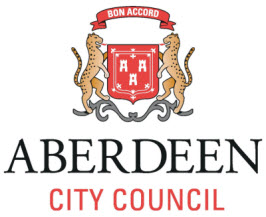In this post we look at the role active bystanders can play in creating healthier, more inclusive workplaces and highlight who can benefit from this training and what that training involves.
Nobody wants to work in an environment where people feel uncomfortable or where unacceptable behaviour goes unchecked. Many of us can shy away from challenging these behaviours when they are witnessed. Here we look at a practical way this can be overcome by learning and exercising the skills of an active bystander. This enables us all to play our part in helping create healthier, more inclusive workplaces free from behaviour that causes others discomfort or distress.
What is an active bystander?
An active bystander is someone who makes the choice to say or do something when they witness an event which causes others distress or they feel is unacceptable in some other way. They may challenge the behaviour directly, or signpost it for others to act.
This contrasts with a passive bystander who, in the same circumstances, will let the event pass with no comment or overt recognition something untoward has occurred. Not because they fail to recognise that something is wrong, but because they may not realise that it is their responsibility to act.
What role can active bystanders have in a workplace?
Using their skills to recognise when inappropriate behaviour is at play, and to then intervene safely, can draw the boundary between what is regarded as acceptable or unacceptable. Applied consistently, this can help to call out and prevent problematic behaviours such as bullying, harassment and microaggressions. The result being to ensure that the values an organisation stands by are actually demonstrated in practice, helping to create a more inclusive and productive workplace for all.
Who should be encouraged to become an active bystander?
There are benefits to be gained by everyone in a workplace attending training on how to become an active bystander.
For example:
- All employees can be empowered to deal with challenging situations confidently and effectively and learn that everyone, regardless of the position they hold, contributes to a workplace free from harassment, bullying, microaggressions and incivilities.
- Team leaders can learn to proactively address and prevent unacceptable behaviour as well as how to support their team members.
- Managers and leaders can learn both how to model positive behaviour and to respond appropriately to any problematic behaviour or actions.
- HR professionals can enhance their ability to handle sensitive situations and promote openness, diversity and inclusion by honing their understanding of problematic behaviours and learning effective interventions.
What does active bystander training involve?
Our Active Bystander Training course usually takes place virtually but can be delivered in person and is a 3-hour course with the exact content tailored for each organisation by one of our expert trainers.
They will start by creating a safe space to ensure that the environment is fully conducive to learning and to support everyone to feel comfortable contributing to the discussions.
To begin, the concepts of Privilege and Allyship are considered to encourage self-reflection, and to enable learners to think about their own level of privilege and how this can be used to support others. Problematic behaviours are identified and examples used to highlight their impact on both individuals and organisations. Small group discussions identify ally behaviours which could be actioned in team contexts.
The 5 steps to becoming an active bystander are explored with scenario-based exercises used to explore intervention strategies. Action Planning ensures that learners identify steps they can take within their own roles, together with actions that could be recommended to their wider team or organisation.
Categories
Recent articles on our blog....
They may not be apple or key lime, but Ted Pies can really help your communication skills
In this article, we include a visual illustrating what the acronym Ted Pies stands for and look at how it can be used to benefit workplace wellbeing.
Read More →Tips for overcoming a culture of false urgency at work
For our latest wellbeing at work tip, we look at some signs that a culture of false urgency may exist followed by suggested tips to overcome it for individuals, managers and team leaders.
Read More →Testimonials

Our purpose is to provide training and consultancy services to enhance resilience, health and wellbeing in the workplace.

Differentiation is one of the most strategic and tactical activities in which companies most constantly engage

It's natural to have questions about training and how it fits with your organisation. Our FAQs can help you find out more.

View case studies for some of the in-house training courses we have delivered to different types of organisations across the UK.





